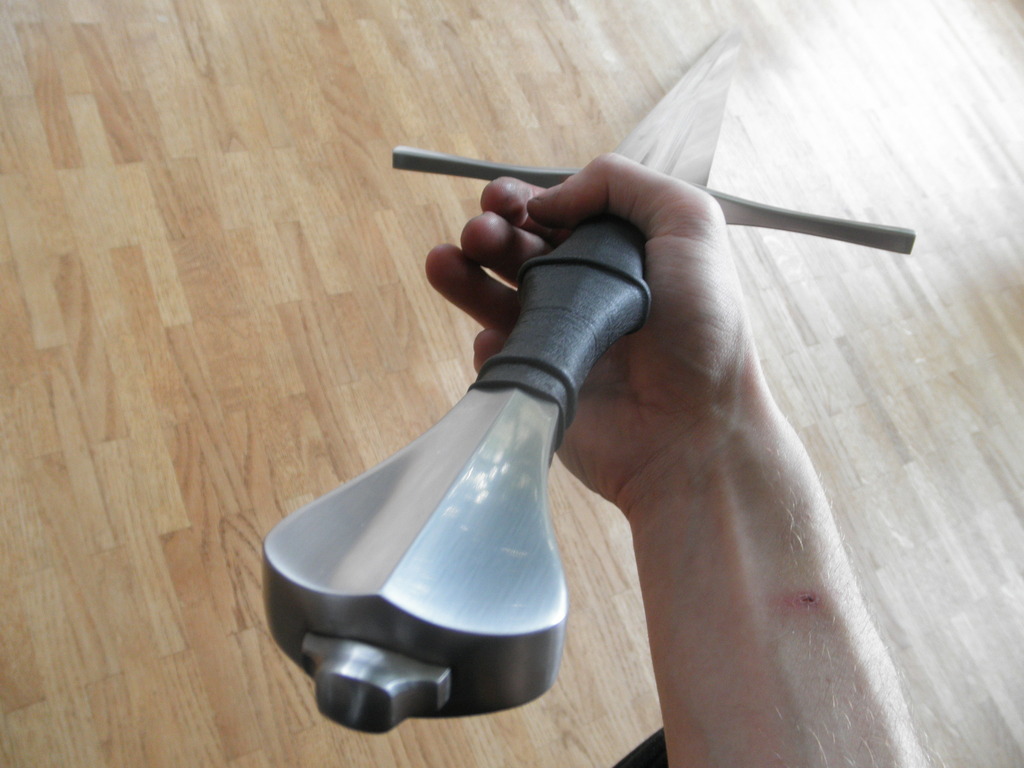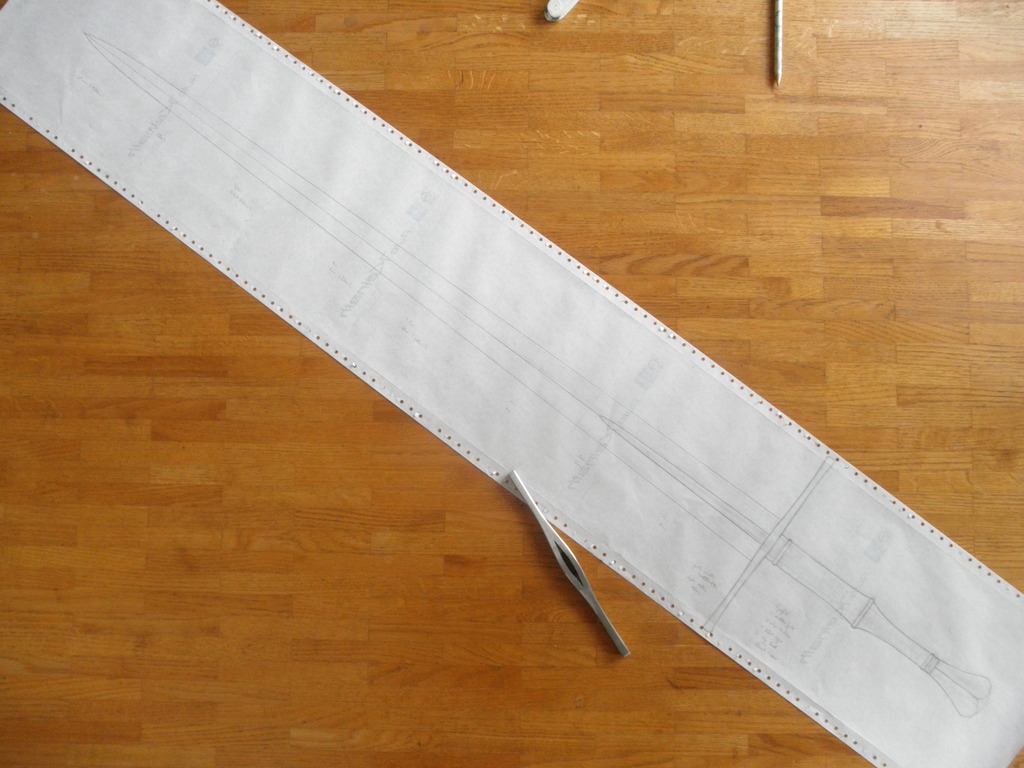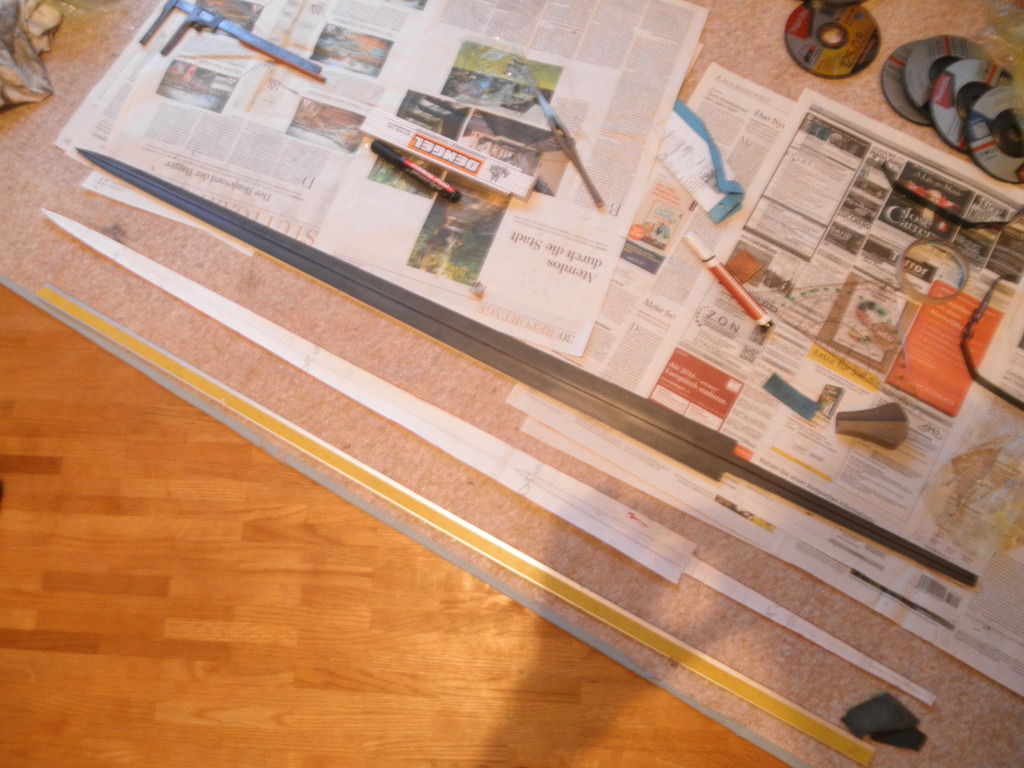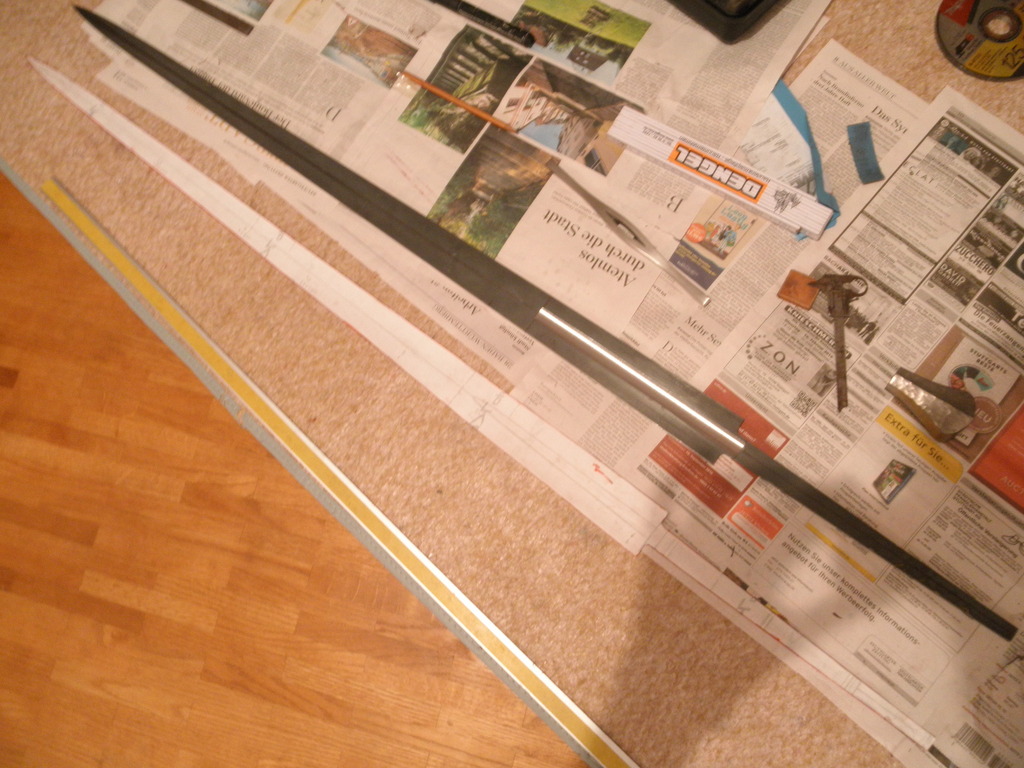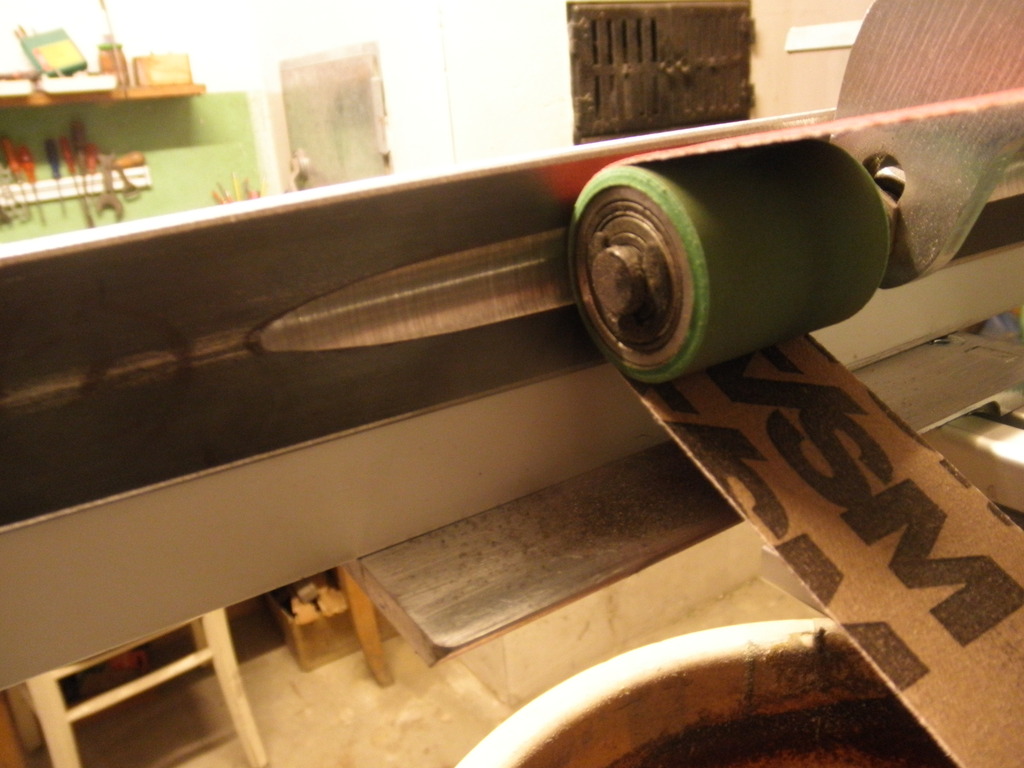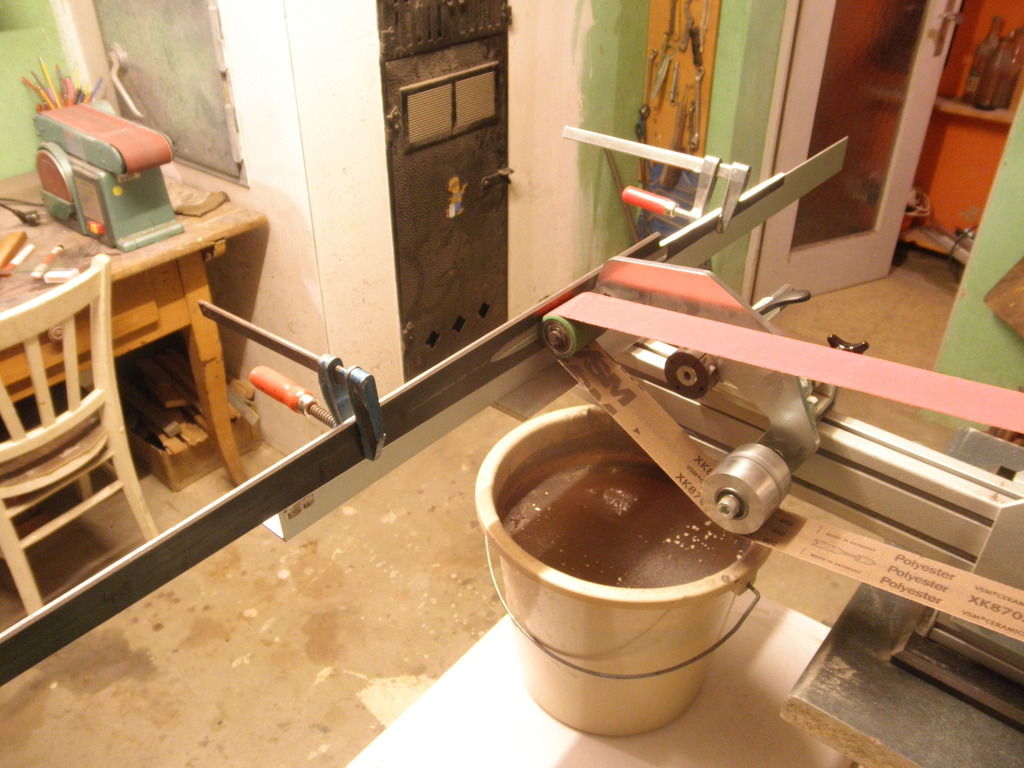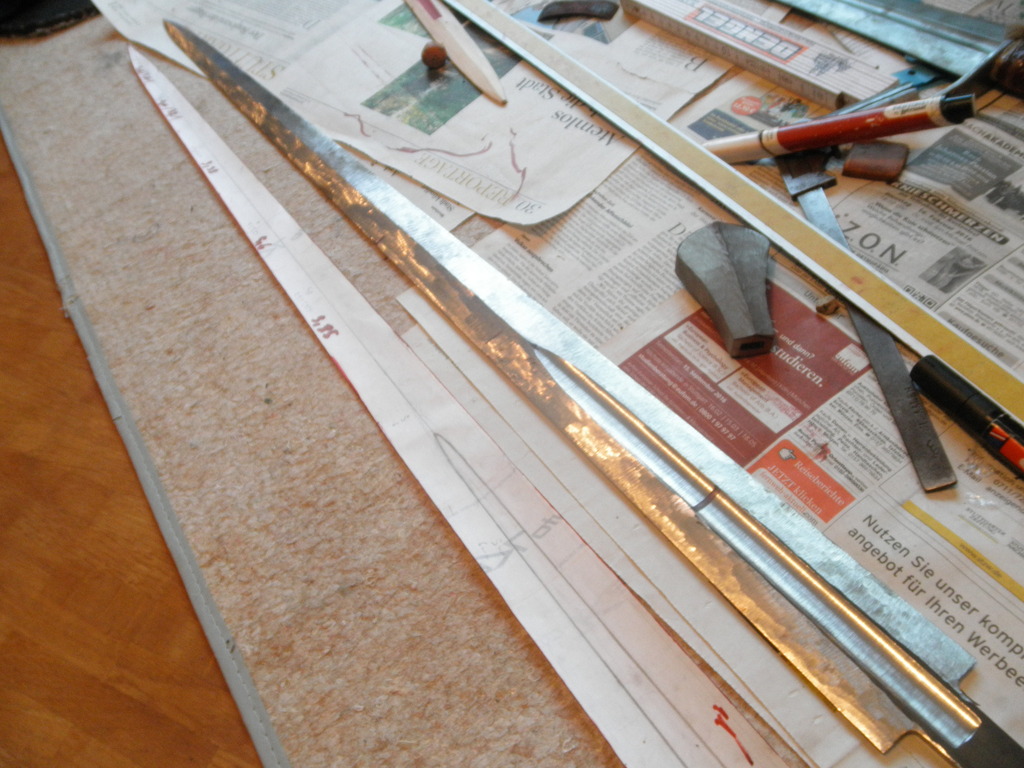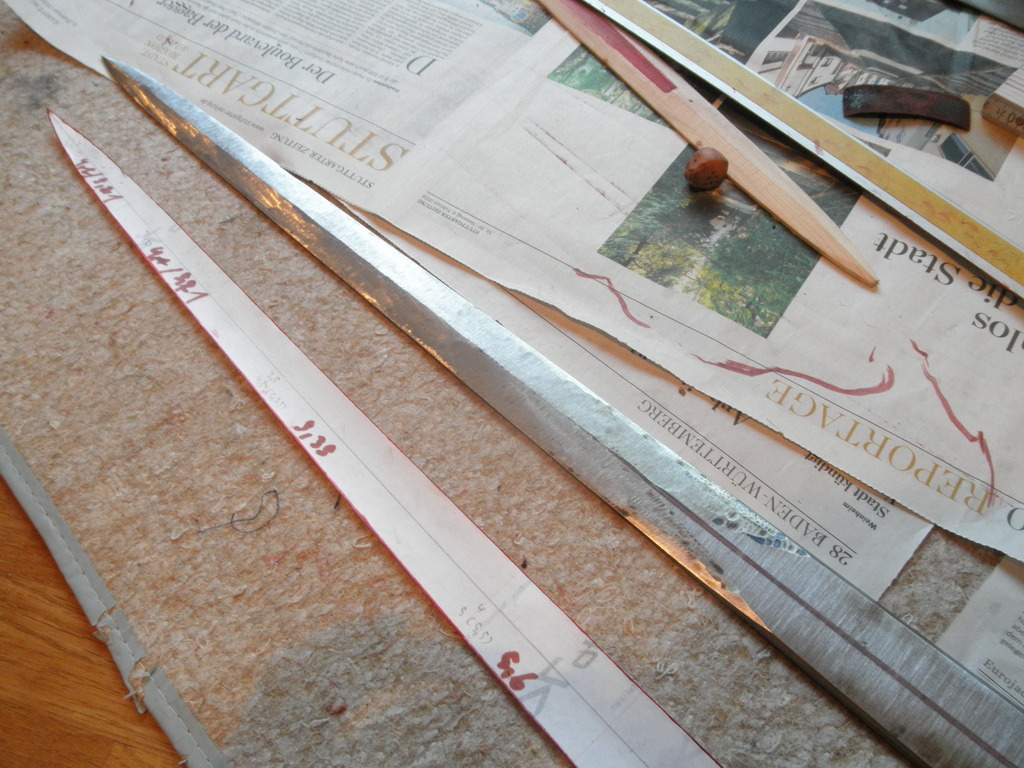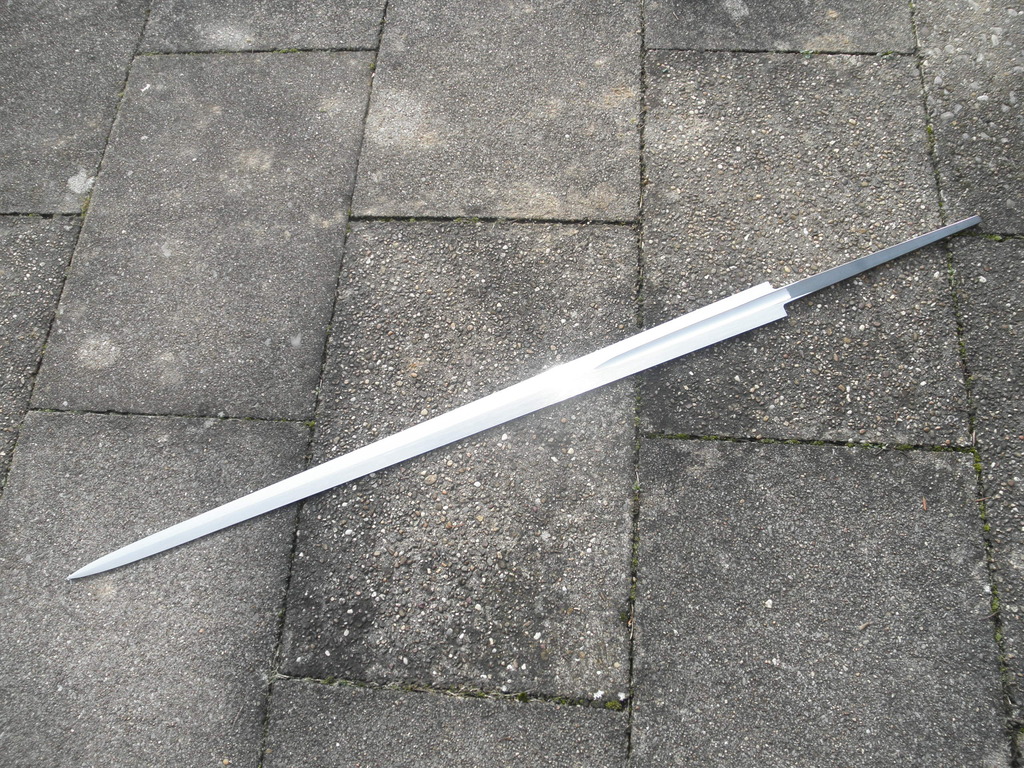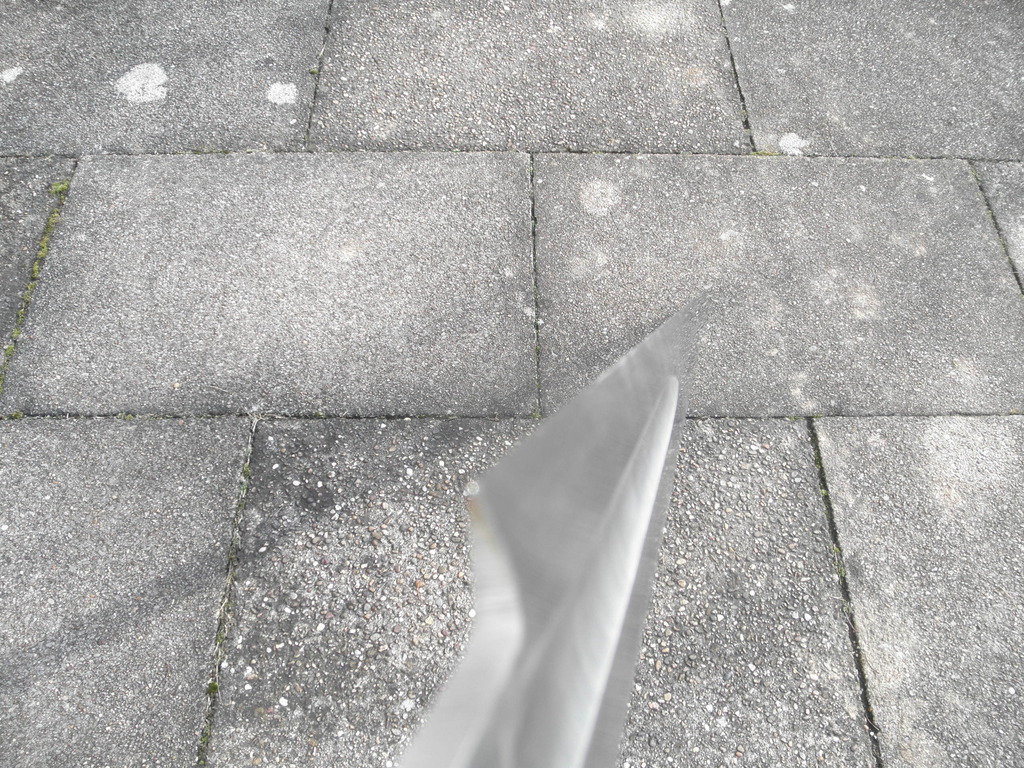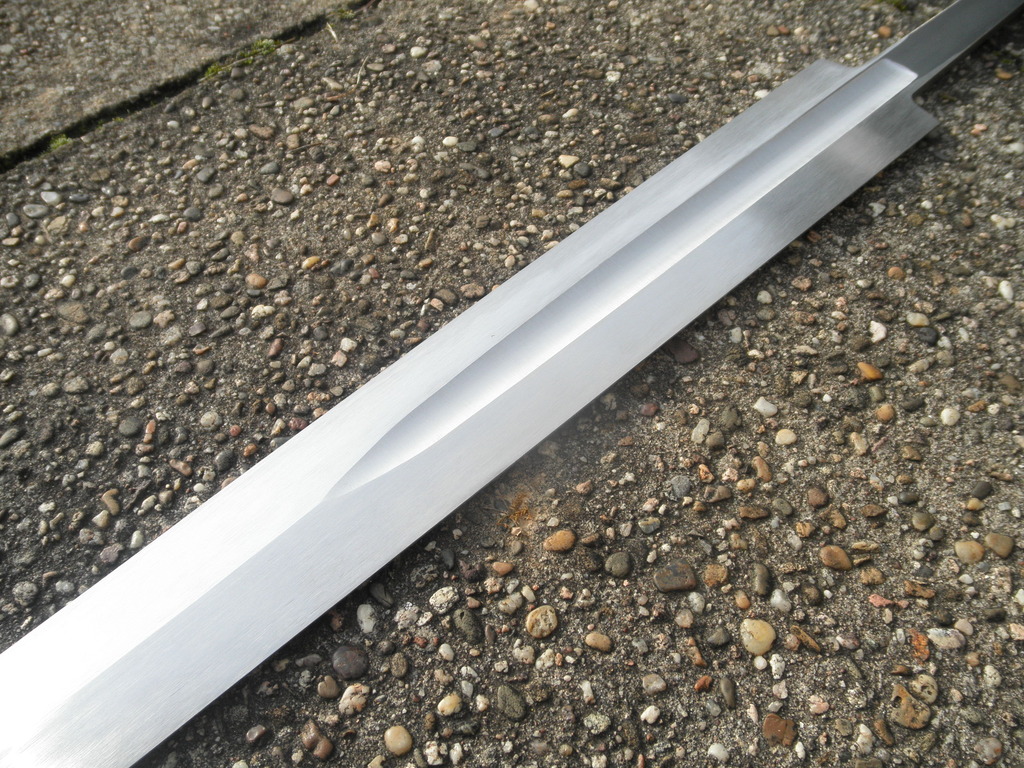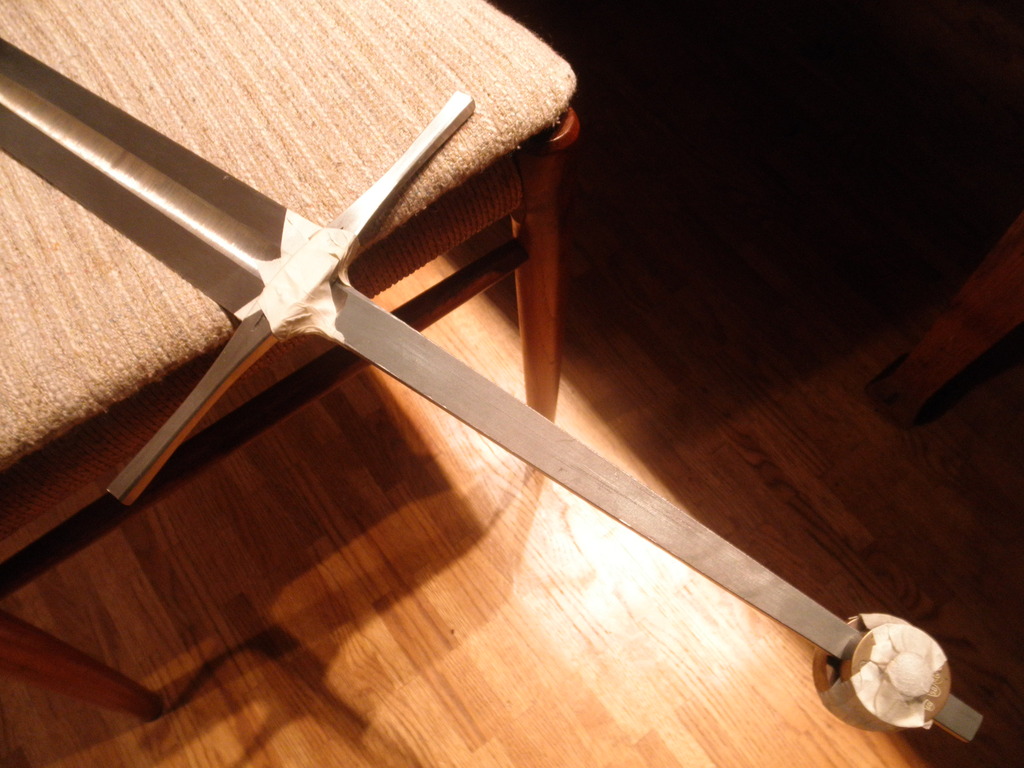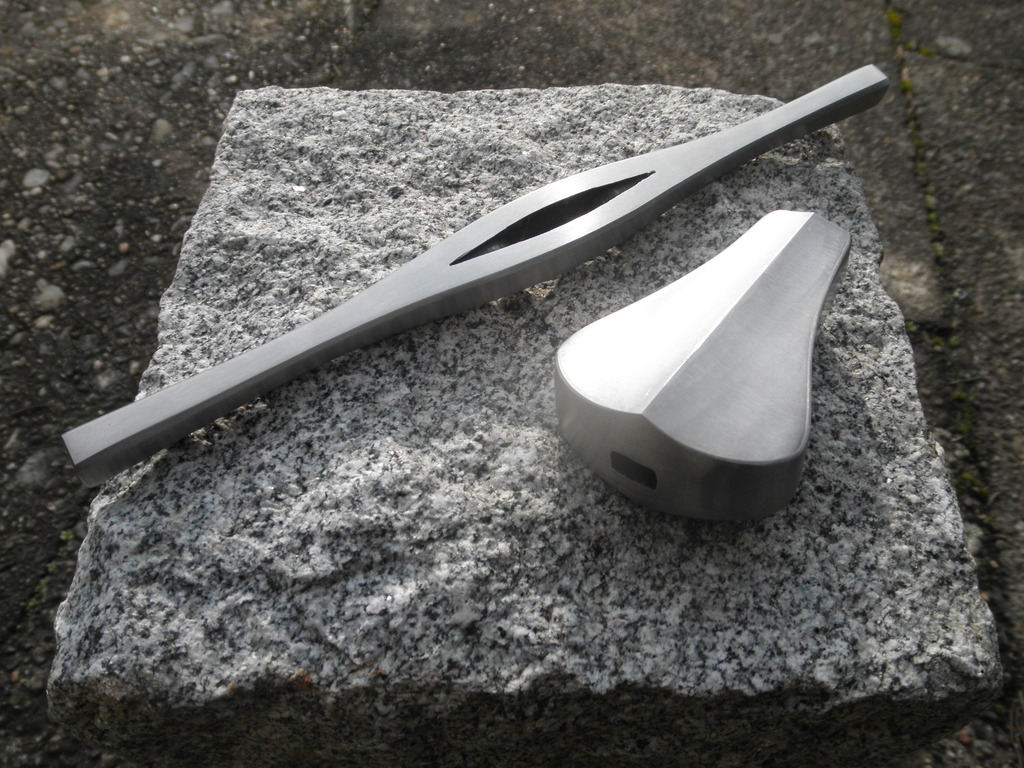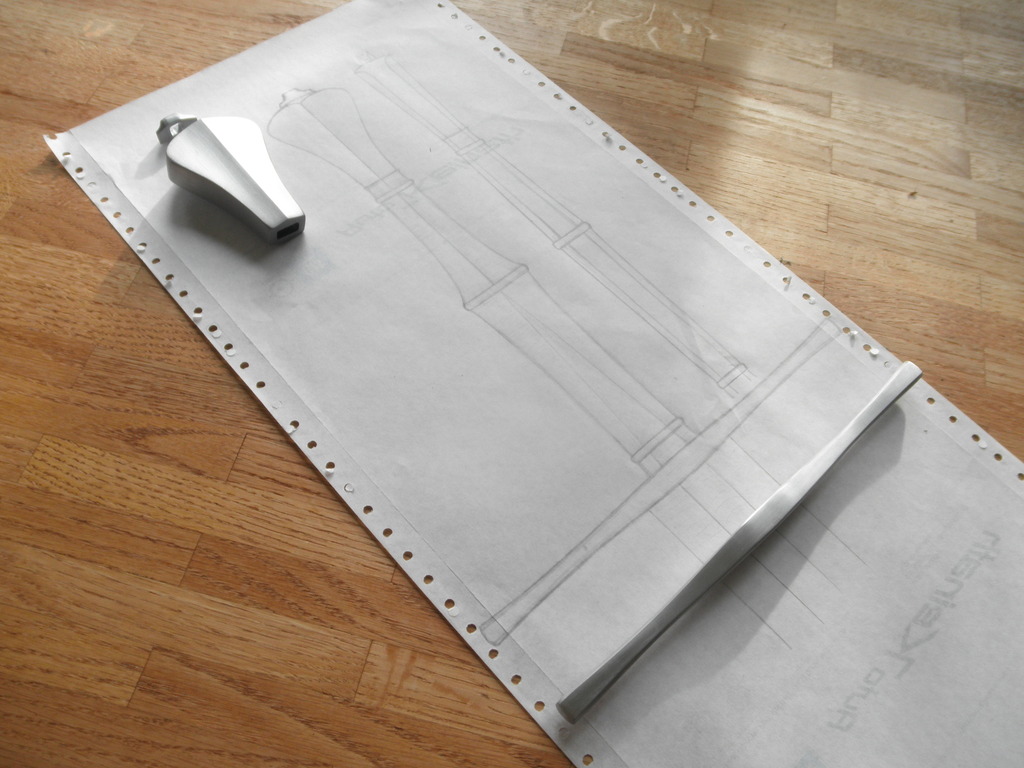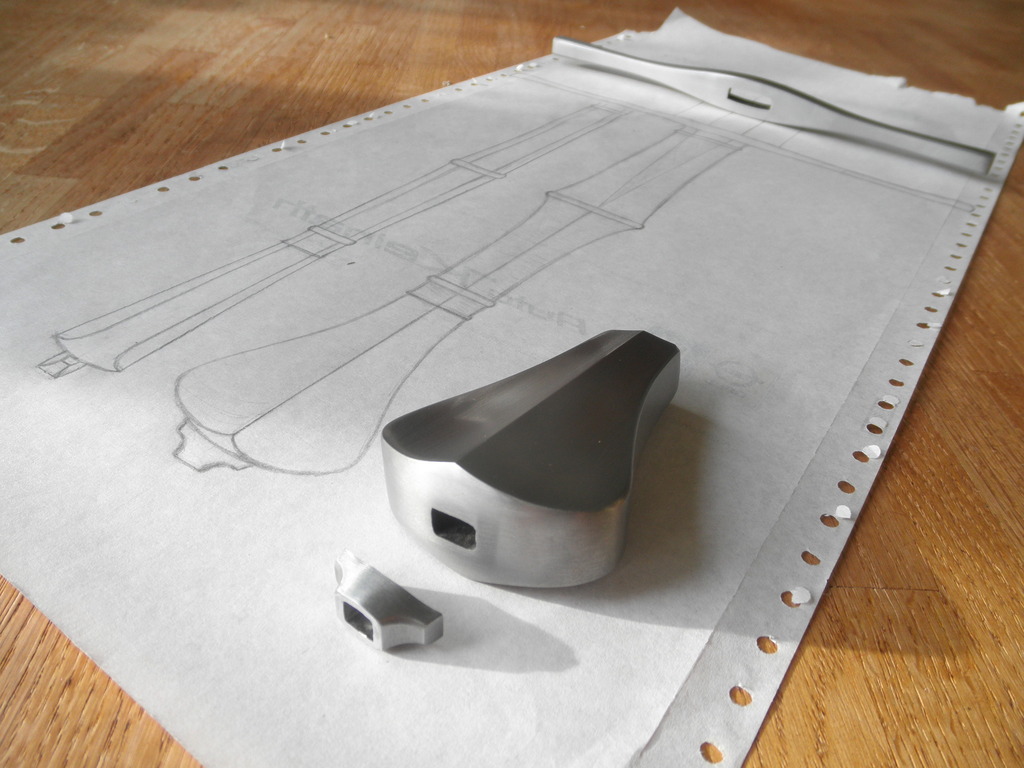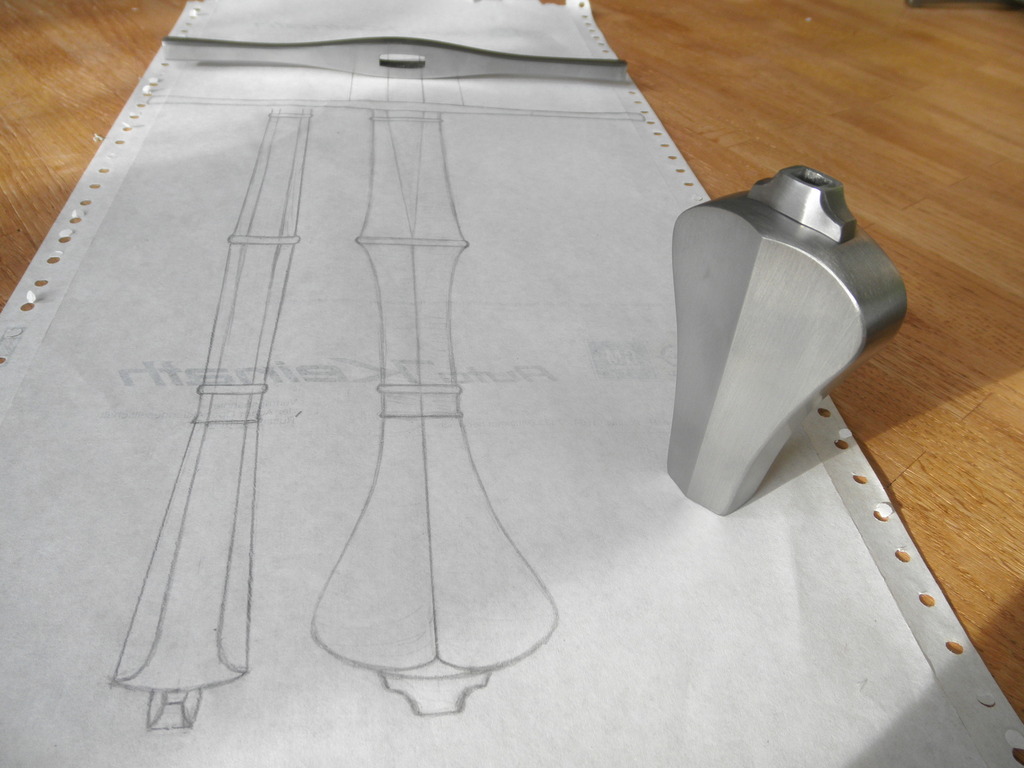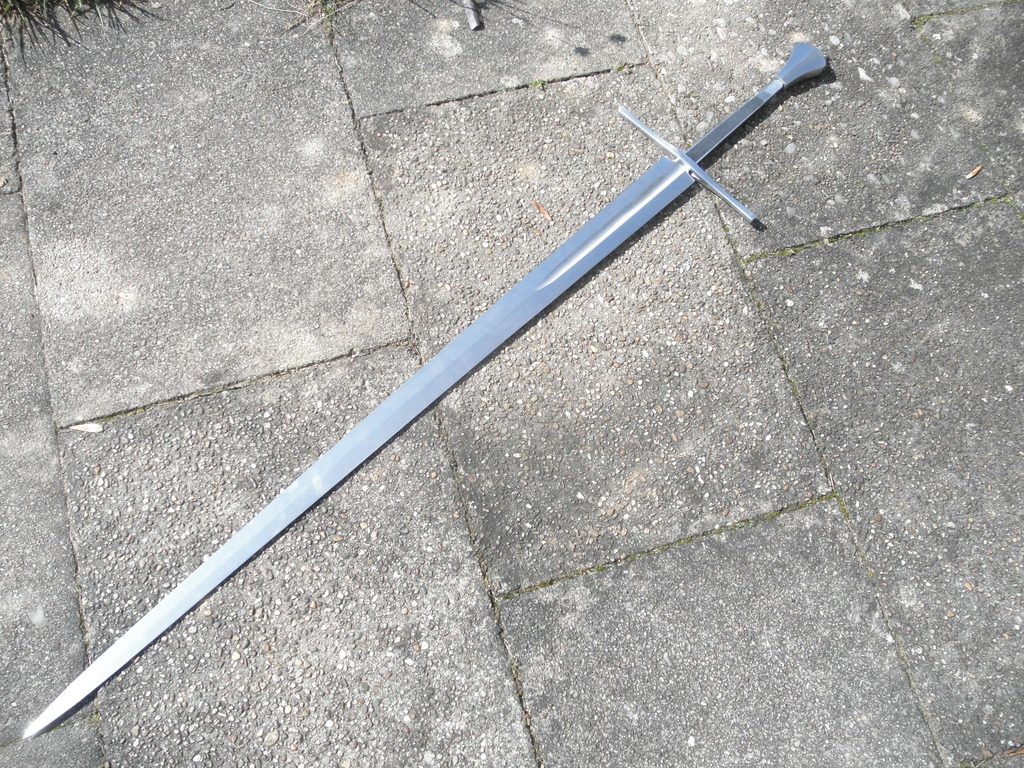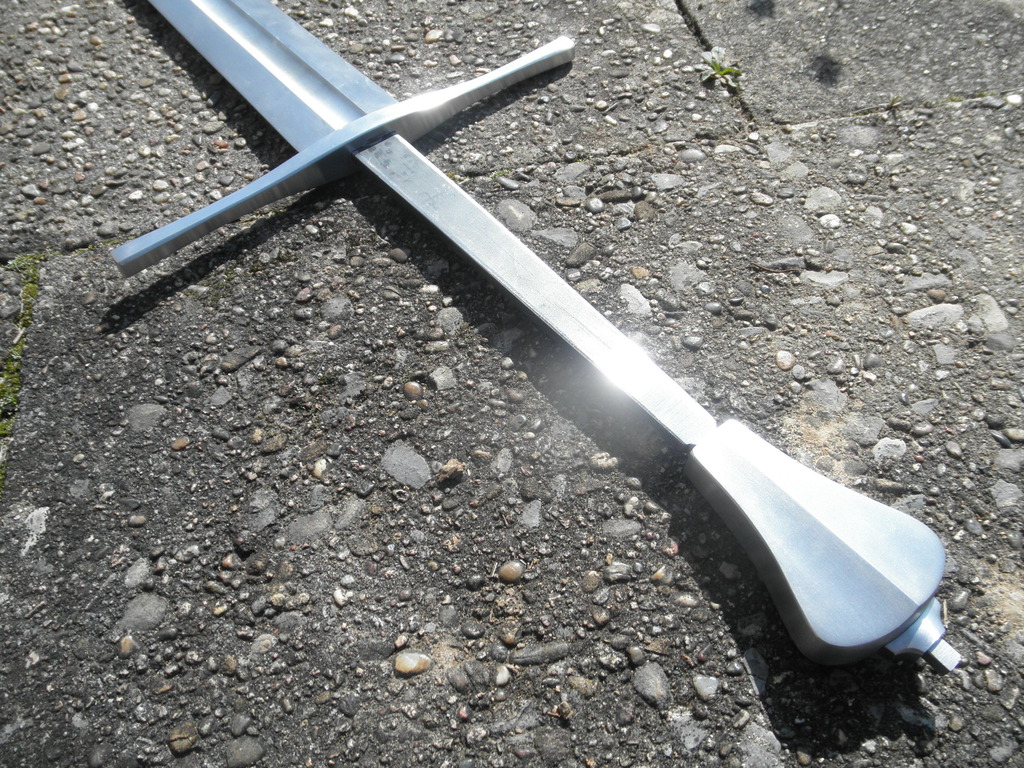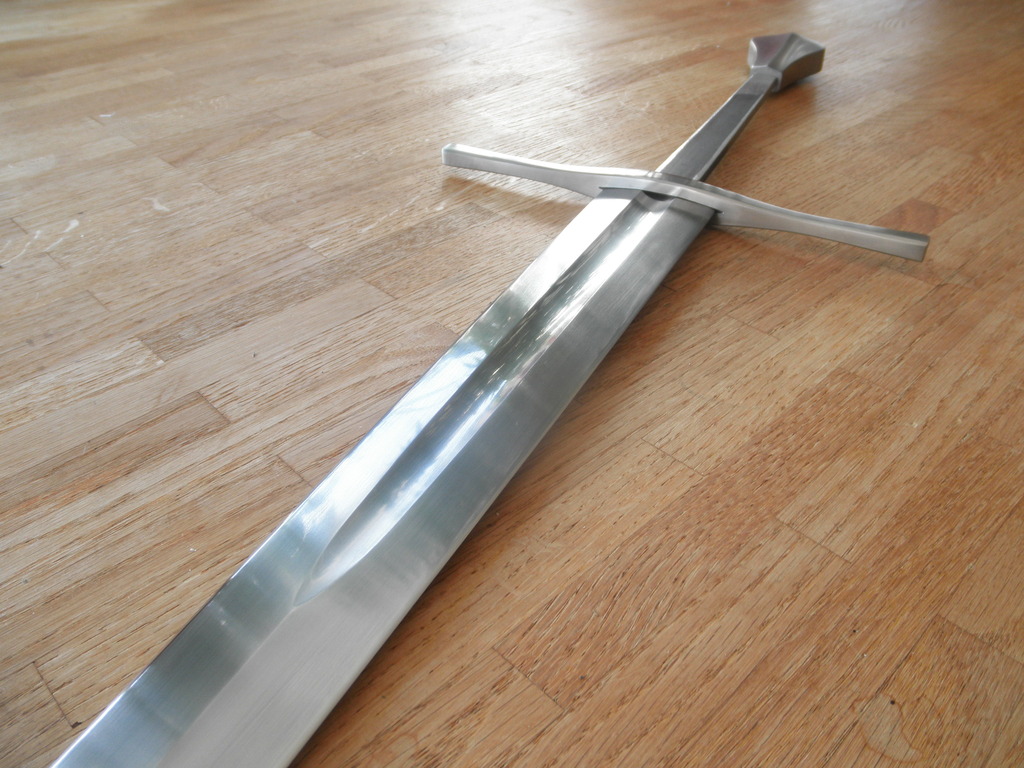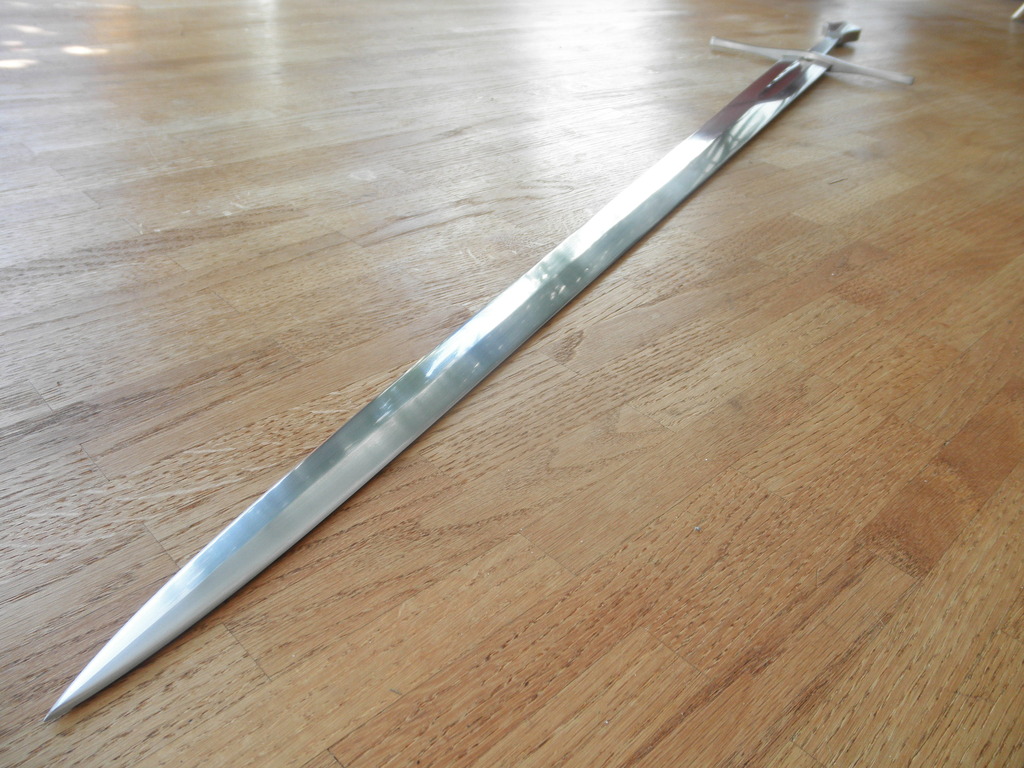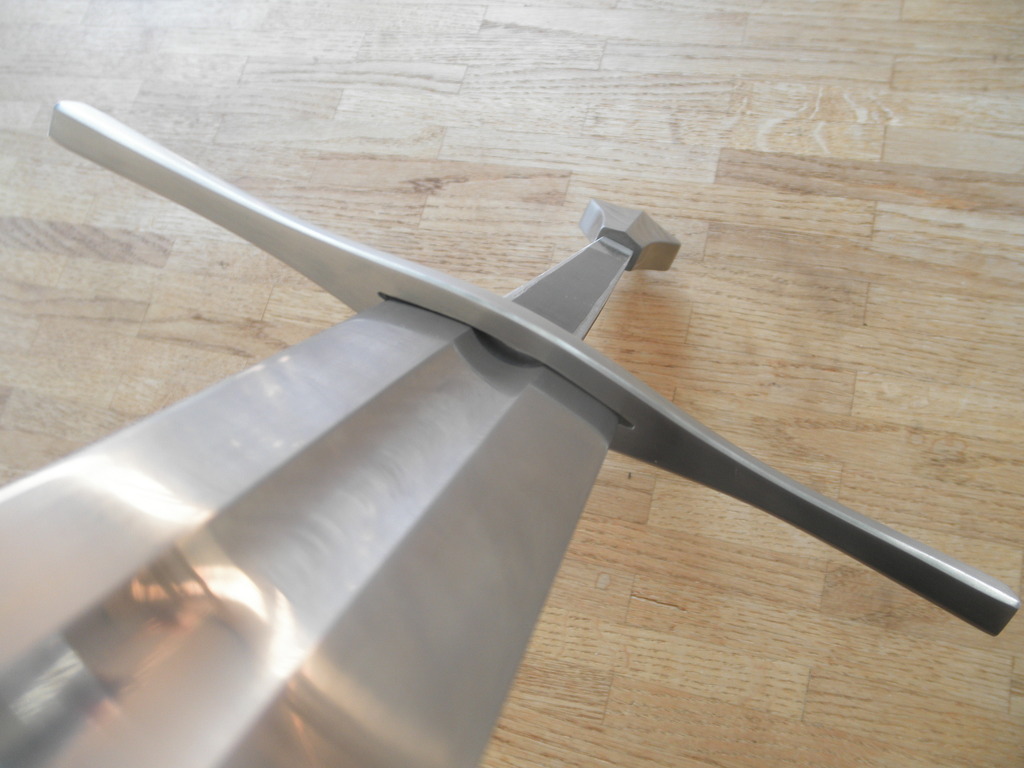Thanks, Julien! I'm happy to hear that :)
Two last in-progress pics:
Dry-fitting the wooden grip core:
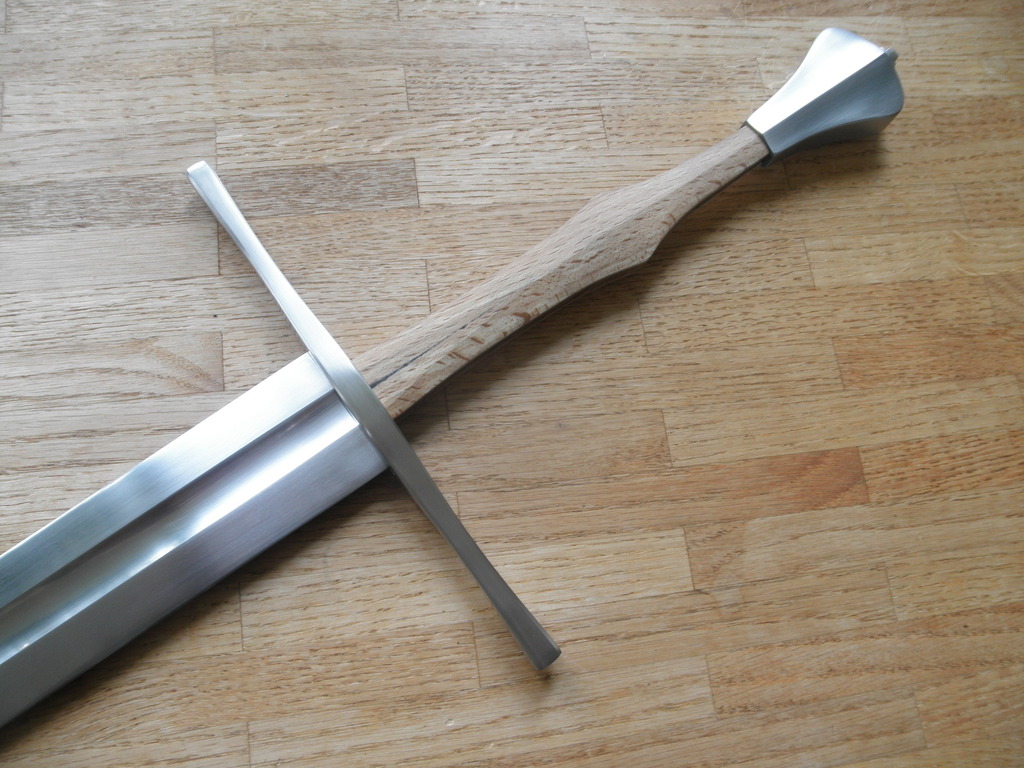
After mounting, ready for the leather wrap:

The longsword is now complete. It usually isn‘t my goal to create a direct replica of an original (though it would of course be possible to commission such a thing). I would rather describe my pieces as being inspired by a certain time period or made „in the style of xy“. This is true for this sword as well, being a civilian longsword that wouldn‘t have looked out of place on the hip of a well-situated merchant or nobleman in the mid 15th century. Someone who appreciated a thoroughly practical fighting weapon but also had a keen eye for aesthetics.
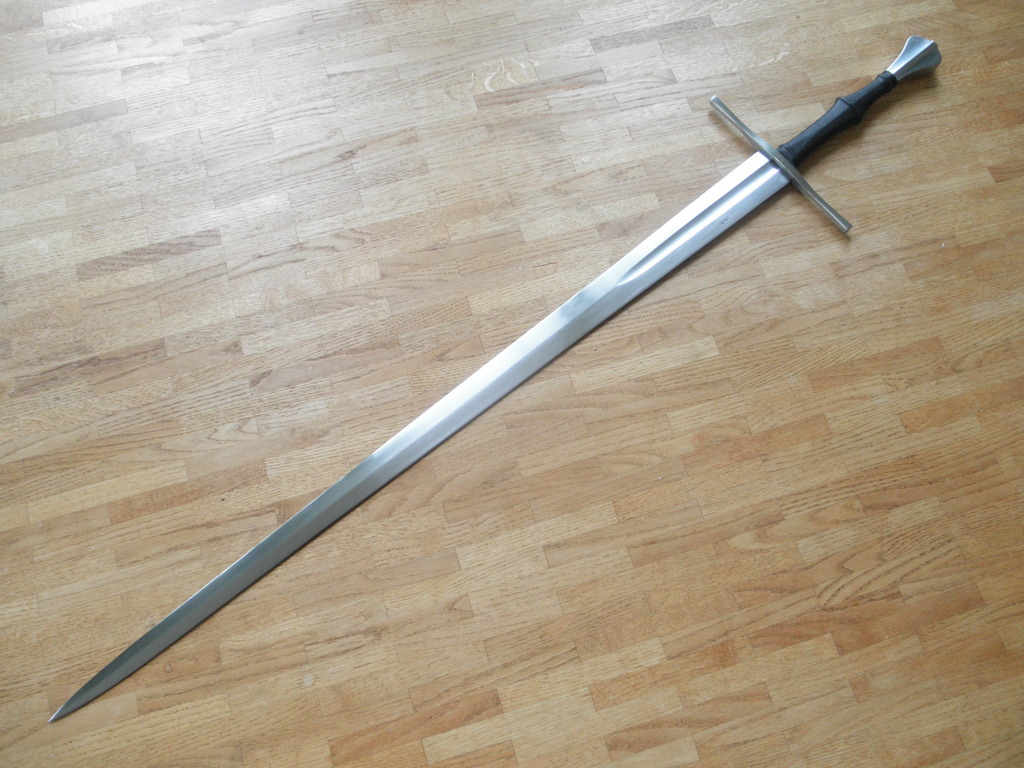
Here are the final stats:
Steel: 56Si7, heat treated to 57-58Rc by fellow sword maker Daniel Rosenfeld
Overall length: 122.5cm (48“)
Blade length: 94cm (37“)
Handle length: 19cm (7.5“)
Blade width at base: 5.2cm (2“)
PoB: 11cm (4.3“)
CoP: 60cm (23.6“)
Forward pivot point: just behind the tip
Hilt node: 6cm (2.3“) behind guard (just where the handle‘s cross section turns hexagonal)
Weight: 1467g (3.2lbs)
Compared to my last swords, this one is a shorter, handier longsword and solely intended for unarmored combat. It lacks the positively massive, powerful impression of a warsword and instead feels lighter and quicker in hand. It is not without blade presence though. While the sword is intended for two-handed use, single-handed techniques can be performed with it quite well. The blade is wide and thin enough at the tip to allow for efficient cutting all the way to the point. Consequently, the tip is unsuited for penetrating harder targets such as mail though the edge bevels do steepen a bit towards the point to reinforce it. The blade has a good deal of flex in the last third but is stiff enough for thrusts into soft targets. The lower half is absolutely rigid, as it should be for winding techniques and the like.
Because the edge is formed on a fairly thin body, I shaped the final sharpness at a slightly obtuse angle to allow for enough support should the edge encounter something harder than just soft targets. The edge is still plenty acute enough to fulfill its role as intended for unarmored combat.

The proportions of this longsword are simple yet graceful. Everything is straight to the point and has purpose. Despite that, aesthetics play a subtle but nonetheless important role as well. One obvious primarily aesthetic feature is the peen block. I guess you could argue from a functional point of view that it would make a pommel strike even more unpleasant but that‘s not why I added it. I felt it gave the pommel that last bit of flair I was looking for.
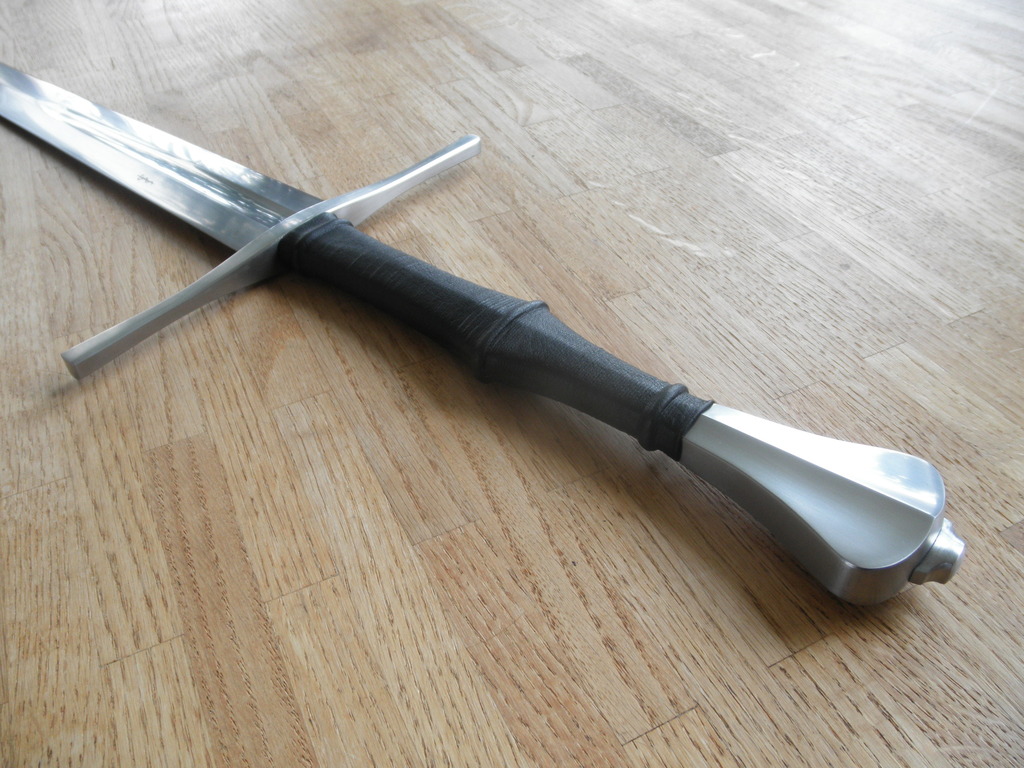
Talking about it, this is the first type V pommel I have made and while I hesitate to call anything „the best xy“, it sure is very high on my current list of favorite pommel types/shapes. It combines the smooth hand-caressing feel of pear shaped or ball pommels with the very clear, instict edge orientation that wheels or other „flatter“ pommels offer. As an aside, it also has some very cool aesthetics going on.
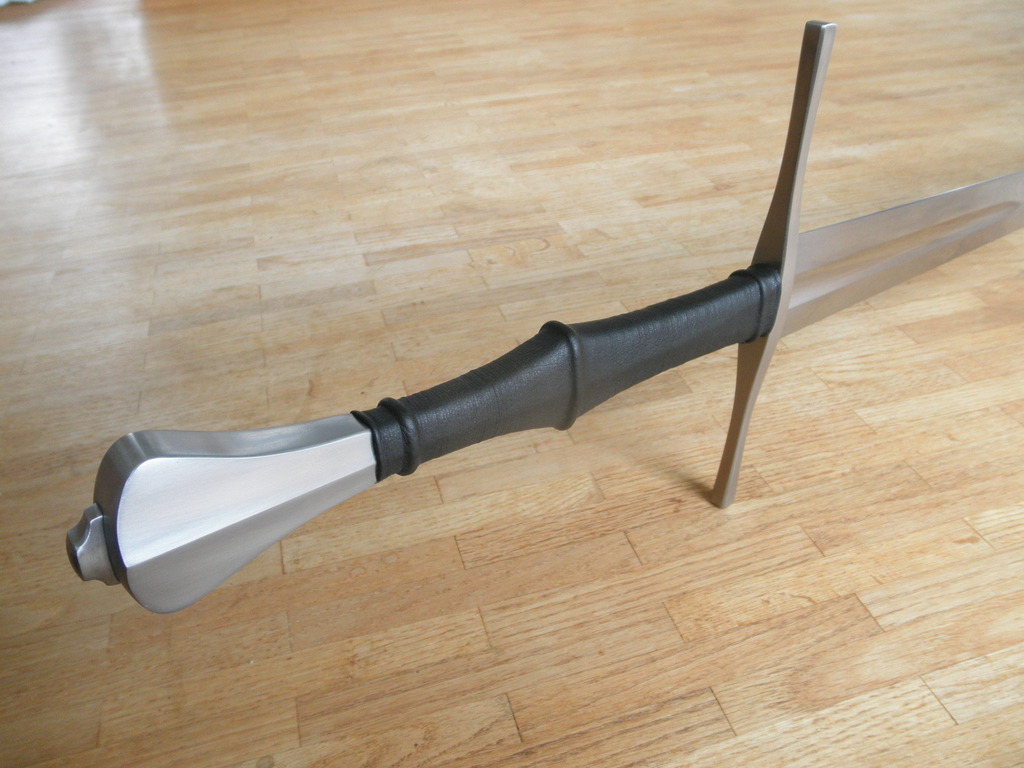
The style 2 guard is a simple affair but features the same clean lines and smooth curves. A nice little detail are the quillon ends, they aren‘t just straight and flat (like cut-off) but in fact subtly convex, following the pommel shape. Clear facetts give the guard a more three-dimensional feel.
The lines in the handle mirror the ones in the pommel, a well-defined center ridge with concave outward sweeps towards the end (right where the hilt node happened to fall into place) that mark the width of the fuller. Though somewhat hidden by the leather and cord wrap, the hexagonal and partly octagonal cross section of the handle is quite obvious and continues the theme of the pommel. Unlike one might think seeing the many ridges and edges, the handle, just like the pommel, is very comfortable to grip and gives excellent feedback concerning edge alignment.
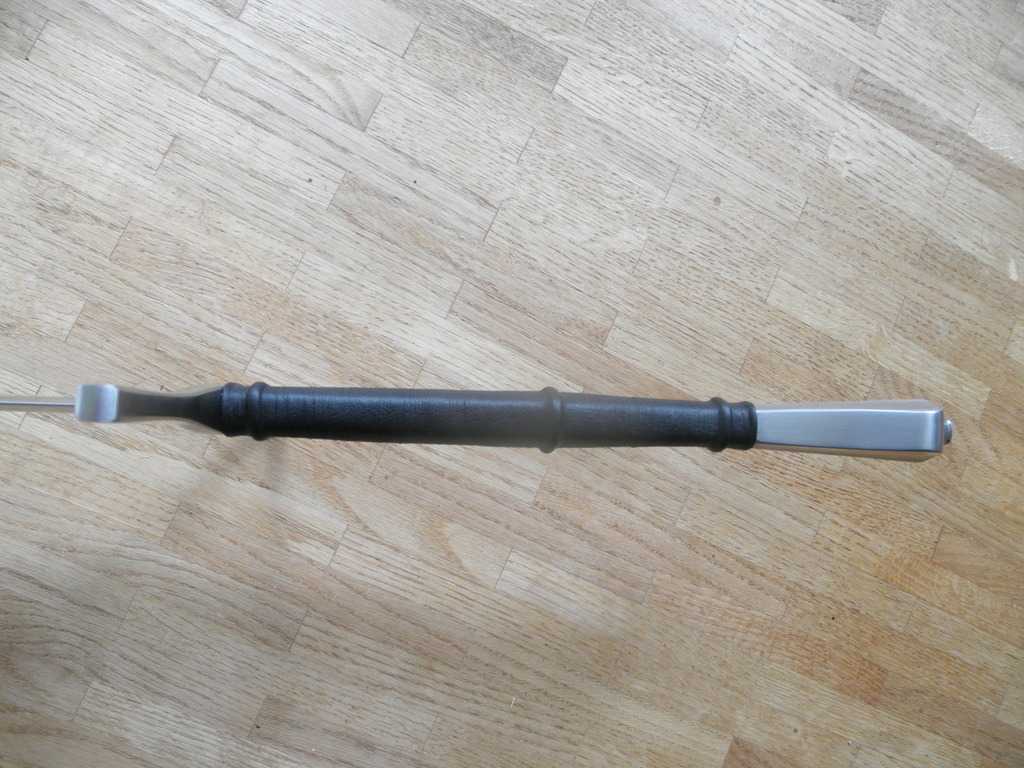
One last point concerning the handle: I don‘t usually like black as a grip color. It is a bit over-used, especially on cheap swords. However, in this particular case I decided to go with black for once. With this sword more than with any other I have made so far I tried to express beauty solely through form and shape and I felt any (actual) color other than black would have detracted from that.
In hand(s), the sword is very agile, offering excellent point control and effortless handling. Change of directions and complex blade actions come naturally and put no strain on the user. All aspects of longsword blossfechten following the teaching of Liechtenauer can be executed with ease.
As it‘s raining at the moment, I will post a cutting video later. I couldn‘t resist running outside real quick to slaughter just a few bottles and an evil-looking branch though. I expected the blade to cut well but it still surprised me at how easily it snickered through the branch. The tetra packs were of course absolutely effortless.
More about cutting performance later once I‘ve done the vid but I can already say that this swords cuts very, very well. The blade is sharp, quite thin, not too narrow and of decent stiffness, all attributes that make for a good cutter.

I will be sending this sword to the UK to be reviewed by Peter Smallridge and David Rawlings, both very experienced HEMA fighters. The review was originally planned for this summer but I got the sword done a lot quicker than I expected... not sure when I‘ll send it out now. I will use it at a cutting event at my club in late april and then again at a cutting presentation this June. You can expected video material from that I hope.
So stay tuned for more info on this sword and my work!
Cheers and thanks for watching!
